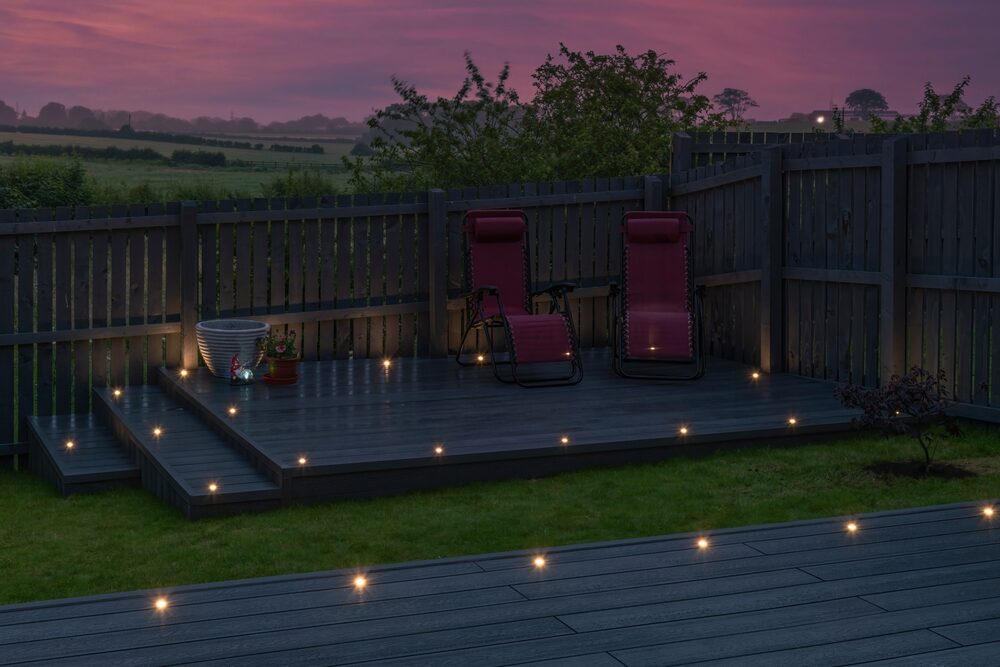Ever wondered why some gardens look magical at night? Often, the magic touch comes from getting your landscape lighting just right. Knowing how to set landscape lighting timer can transform your outdoor area into a serene, inviting space without skyrocketing energy bills. It’s not just about aesthetics; it’s smart home management at its best. Whether you’re aiming for security lights that deter unwelcome guests or soft illumination that enhances your garden’s features after dusk, getting the timing right is crucial.
The task might seem daunting but fear not! Setting up your landscape lighting with precision doesn’t require you to be tech-savvy or call in a pro every time you want adjustments made. Let’s shed some light on this topic and guide you through setting up your outdoor oasis effortlessly.
Understanding the Basics of Landscape Lighting Timers
If you’re looking to add some extra flair to your outdoor space, landscape lighting is a great place to start. But before you start stringing up those lights, you’ll need to understand the basics of timer switches.
These handy devices let you control when your lights turn on and off, so you can create the perfect ambiance for any occasion. And let’s not forget, they’re also a fantastic way to cut down on your energy bills and save some cash over time.
What is a Timer Switch for Lights?
A timer switch is a device that automatically turns your lights on and off at pre-set times. They’re great for adding convenience and security to your home or business.
You can use them for both indoor lights and outdoor lights, depending on your needs.
Indoor vs Outdoor Light Timers
When it comes to light timers, there are two main types: indoor and outdoor. Indoor timers are designed for use with lamps, appliances, and other electrical devices inside your home.
Outdoor timers, on the other hand, are built to withstand the elements and can be used with landscape lighting, holiday displays, and more.
Mechanical vs Digital Light Timers
Light timers come in two main varieties: mechanical and digital. Mechanical timers for lights use a simple dial or switch to set the on and off times.
They’re easy to use but not as precise as digital timers for lights, which offer more advanced features like multiple on/off settings and daylight savings time adjustment.
Choosing the Right Landscape Lighting Timer
Now that you know the basics of light timers, it’s time to choose the right one for your landscape lighting setup. There are tons of options out there, but two of the most popular are the Intermatic Malibu and the Lutron Caséta PRO.
Intermatic Malibu Timer: An Overview
The Intermatic Malibu is a classic choice for landscape lighting timers. It’s easy to use and offers reliable performance, with a weatherproof design that can stand up to the elements.
Plus, it’s compatible with a wide range of low-voltage landscape lighting systems, so you can use it with your existing setup.
Smart Home Timer: Lutron Caséta PRO
If you’re looking for something a little more high-tech, check out the Lutron Caséta PRO. This smart home timer lets you control your landscape lighting from your phone or voice assistant.
You can set schedules, create scenes, and even adjust your lights while you’re away from home. If you love tech and want to have the power over every flicker of your lights, this is definitely for you.
How to Set Up Your Landscape Lighting Timer
Setting up your landscape lighting timer is easier than you might think. Here’s a step-by-step guide to get you started:
Locating Your Transformer & Timer
First, you’ll need to find your transformer and timer. These are usually located near your outdoor electrical outlet or in your garage.
If you’re not sure where they are, consult your landscape lighting system’s manual or contact the manufacturer for help.
Determining the Current Time of Day
Next, you’ll need to set the current time of day on your timer. This is important because it ensures that your lights will turn on and off at the right times.
Most timers have a simple dial or digital display that lets you set the time.
Setting the Dial Correctly
Once you’ve set the current time, you’ll need to set the dial on your timer to the desired on and off times. This will determine when your lights turn on and off each day.
Make sure to double-check your settings before moving on to the next step.
Testing Your Settings
Finally, it’s time to test your settings. Turn on your landscape lighting system and wait for the timer to kick in.
If everything is working properly, your lights should turn on and off at the designated times. If not, go back and double-check your settings.
Enhancing Your Property with Landscape Lighting
Landscape lighting is a great way to add beauty, safety, and value to your property. But before you start installing your lights, there are a few things to keep in mind.
Choosing the Right Location for Landscape Lighting
When it comes to landscape lighting, location is key. You’ll want to choose spots that highlight your home’s best features, like architectural details, trees, and gardens.
You’ll also want to consider safety, making sure to light up pathways, stairs, and other potential tripping hazards.
Related Products for Landscape Lighting
In addition to your lights and timer, there are a few other products you might want to consider for your landscape lighting setup. These include:
- Low-voltage transformers
- Wiring and connectors
- Stakes and mounting hardware
- Bulbs and lenses
By investing in high-quality products, you can ensure that your landscape lighting system will look great and last for years to come.
Setting up your landscape lighting timer is a breeze. Just find your transformer, set the current time, dial in your on and off times, and test it out. This simple process lets you enjoy a beautifully lit outdoor space while saving energy.
Conclusion
So there we have it – mastering how to set landscape lighting timer isn’t rocket science after all! From adding curb appeal to increasing safety and efficiency around our homes, well-timed lights play a pivotal role. And let’s face it; nothing beats the satisfaction of seeing your garden glow exactly when needed without any manual fuss daily.
This journey towards smarter living does more than just beautify our nights; it symbolizes taking control over our environment sensibly and sustainably. With these simple steps under your belt, those twilight gatherings and peaceful evening strolls will now be illuminated precisely as intended—every single time.
All said and done, whether it’s keeping shadows at bay or highlighting architectural marvels within our backyards—the magic truly happens when technology meets intent in the form of timers managing our lights elegantly from behind the scenes.








